What if I told you that succeeding in outreach doesn’t need to be hard or expensive?
You probably wouldn’t believe me but it’s true. Especially if you’ve just sent thousands of emails with very few responses and it feels like you’re getting nowhere.
I’ve been there, too…
I was like you, desperately sending one bulk email after another, receiving only auto replies in response. And that’s what made me step out of my comfort zone and start experimenting. In this post I’m going to show you exactly how I mastered my outreach campaigns so the majority of respondents reply with “hell yeah!”
However, before I uncover my killer strategies and tips, I believe it’s necessary to go through the most typical and very common mistakes that I keep stumbling upon. I see them everywhere, and unfortunately they can send all your outreach efforts down the drain.
Contents
Mistake #1: Using Standard Templates
You might be wondering what I mean by standard templates? Go to Google and type “email outreach template”. You’ll see thousands of posts that are sharing XX templates that ‘actually work’:
Clearly, I’m not the only one who decided to look for email outreach templates. It’s very common for marketers to grab one of these templates from Google’s top links. As a result, those templates are drastically overused, and a message built upon them looks spammy. All those templates always start with the same generic hook, you’ve probably seen them, too: “Your blog is awesome!” or “I’m an avid reader and have been following your blog for so long”. Just like a bad pick up line, it never works.
I receive dozens of these pitches every day; below you can see the most recent one that perfectly describes what I’m talking about:
This pitch is screaming of a standard template. The structure and tone of the email all point to it. Using unspecific compliments about the post gives you a clear understanding that this has been sent in bulk. In addition, the grammar and logic are all over the place.
Mistake #2: Lack of Personalisation
Spending time on personalisation is key to your outreach success, even if you’re sending pitches to hundreds of people. Here’s the deal. Compliments don’t pay off unless you specify which part of the post you enjoyed and, more importantly why you enjoyed it.
Here’s an example of someone trying but failing to add personalisation:
Do you see where they went wrong? Although they added a link to my post, which is good, they gave me no insight into what they liked or why they liked it. The more detail you include in the email, the less spammy it looks.
To give you a better understanding of what I’m talking about, below is my outreach email (that is in fact built around a standard template) where I’m referring to a particular part of the post about Google search operators:
Mistake #3: Lying and Using other Dirty Tricks to Increase Open Rate
Do you want high response rate? Then don’t lie.
For some reason, outreachers love telling you that they know you, others like to put “Fwd” in the subject line. These strategies just don’t work, not to mention they are misleading and simply unethical. Outreach is about building trust, so lying will break it straight away.
In the email below you can see that the person says they know me and that they’ve been in touch before.
Guess what, they haven’t:
So, now that you know what not to do, it’s time to move onto the good stuff. The stuff that will push the effectiveness of you outreach through the roof! Like, seriously. Here we go…
Reaching Out to the Right Person
Now, this might sound obvious but you’ll be surprised how many people fail at this point.
Connecting with the right people contributes massively to the success of your outreach campaign. Unless you spend time double-checking contacts, people’s interests, titles, job positions etc. you might end up writing to the wrong person, and then it won’t matter what exactly you are trying to say to them — they simply won’t listen.
When we do outreach, we spend around 60% of time on personalisation. This means double-checking sites, blogs, and contacts that were pulled automatically by outreach tools.
Here are a few tips to ensure you’re connecting with the right people:
- Exclude guest posts – guest contributors very rarely have access to published content.
On top of this, the majority of blogs have strict guidelines when it comes to placing links. The only working way here is to filter such blogs out. Here’s how you can do it.
I recommend using BuzzSumo to see if the blog accepts guest posts or not. As you can see on the pic below, BloggingWizard.com has a high number of guest contributions:
Here’s a great list of blogs that accept guest posts within nearly every niche that should also help you filter out the irrelevant ones.
- Find the person’s contact details – avoid sending your outreach messages to generic email addresses, that’s decreasing the chances of receiving a response.
For example, Hunter.io is one of the many tools that can speed up outreach by pulling email addresses directly from the blog. On top of this, in case Hunter.io doesn’t know the email of the employee that you’re searching for, it still shows the template around which all emails are built in this company:
In case you’re interested in digging more and testing some other tools, here’s an excellent post by Robbie Richards about the best link building tools.
Craft a Powerful Hook
Starting the conversation correctly is key to success. Showing that what you’re offering is beneficial to the other side is going to win their attention. E.g. you could offer sharing their content across your channels or telling them about a broken link that you found in their post.
By the way, if you think that finding broken links takes too much time, I can assure you: it doesn’t. For instance, with the Ahrefs tool, you can easily get a list of all the website’s broken links:
Besides Ahrefs, there’s plenty other tools to choose from for that task. Recently, I made an in-depth guide with backlink tool comparison — you can take a look there.
Here’s another quick tip, never ask about links in the first email. If you’ve spotted an error on their site, just be a good guy and let them know. And if you get a positive reply, then ask about possible cooperation on the link building side.
So, here I’m suggesting using broken links as a way to start a conversation rather than trying to actually replace a broken link with your content. However, capitalising on broken links is a working link building strategy. In this Guide to Broken Link Building you’ll see how to do it.
Create your Own Outreach Style (including template personalisation/tone and etc)
In digital marketing, there are plenty of possibilities to do things with copying and pasting, but outreach templates should not be one of them.
When you reach out to a person, it’s important to grab their attention from the very beginning of your message. If your message is personalised, your chances of getting a reply are higher.
Also, it shouldn’t be refined, sterile, stripped of your own personality. You have your own unique voice and style, so don’t be afraid to show it.
This is why I love Zest’s emails. They have that voice, and they use it in every email they send.
Lately, I’ve been also using videos and gifs in my outreach emails. I’ve found using them very successful.
A short video that says “ thank you for…” recorded specifically for this recipient adds a great touch of personalisation. I’ve also been adding gifs, here’s my favourite one:
Leaving comments also works wonders. It doesn’t matter where – LinkedIn, Twitter, YouTube, or people’s own blogs. Meaningful comments show that you’ve not only invested time into reading, but want to engage in a discussion about it, and people like that.
Connecting with People Who are Ready For It (the low hanging fruits of outreach)
When people are not ready to be reached out to, you can jump through a dozen hoops trying to impress them — they still won’t be impressed. So, to improve your response rate, it’s important to understand who is ready to hear you out and who’s not so much.
For example, marketers who are currently promoting content are often interested in link building and are way more eager to reply. Also, influencers are more open for collaboration than regular marketers, since the former do it often. So, if you only reach out to people who are open for communication and potentially interested in your offer, your chances of getting a positive response grow much higher.
Finding them is not complicated at all.
Zest is a great place to spot fresh content within the digital marketing niche. Another option is BuzzSumo — this one allows you to look for content everywhere.
I suggest looking for posts that have been published within the last 24 hours.
The first few hours after publication are important for authors since, of course, everybody is hoping for immediate engagement. If you support them at this stage and offer help with content promotion, you’ll do them a favour and will have the grounds to ask for their assistance in return.
Finally, it’s much easier to pitch your story to someone (especially if we’re talking about journalists) who have already covered similar stories before. To get the list of journalists who can be interested in your material, look for your target keyword in BuzzSumo and then check in Ahrefs or any other backlink analysis tools who’re referring to this piece. Here’s a in depth how-to where you can learn about this strategy starting from the process of content ideation, finding the right contacts and pitching journalists.
Wrap up
There are three factors that are crucial for successful outreach: research, personalisation and mutual benefit.
Research the addressee, make sure you’re contacting the right person. Find out what interests them, what content they are promoting, and offer help in the right moment.
There’s nothing wrong about outreach templates. However, refrain from using anything that you find online (especially, in posts like “20 outreach templates THAT WORK” from the top search results). Instead, create your own template that has your tone of voice and style, and personalise it every single time for every person that you contact.
And last but not least, show people why collaborating with you is beneficial to them. Don’t start the conversation by asking for things. Make them an offer that they won’t want to turn down, and then, and only then, ask for something in return.
- About the Author...


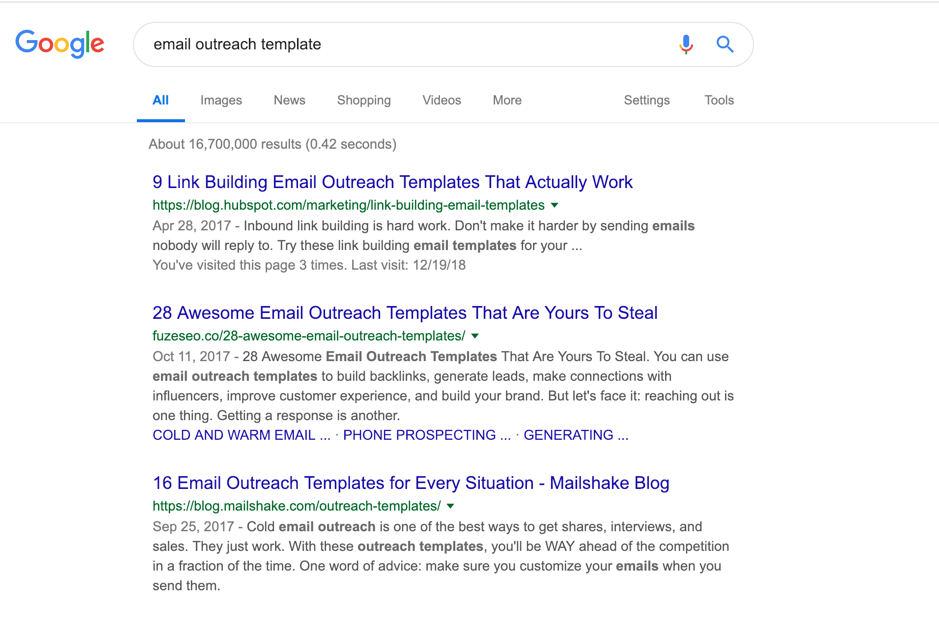
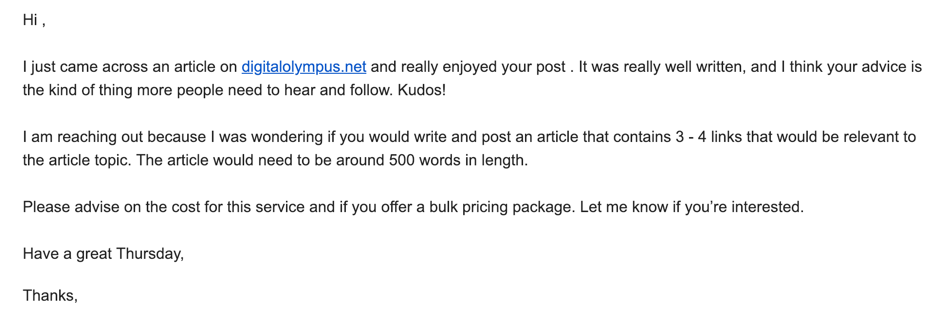



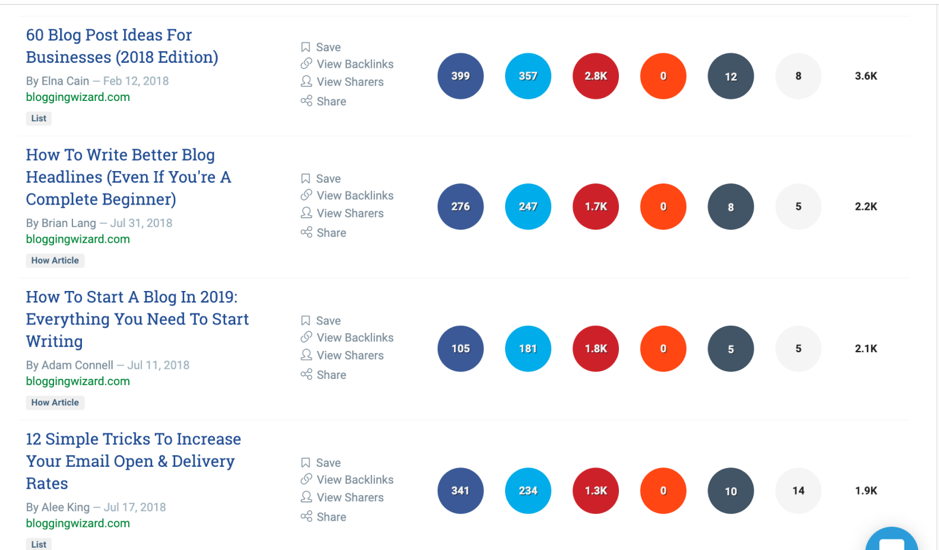


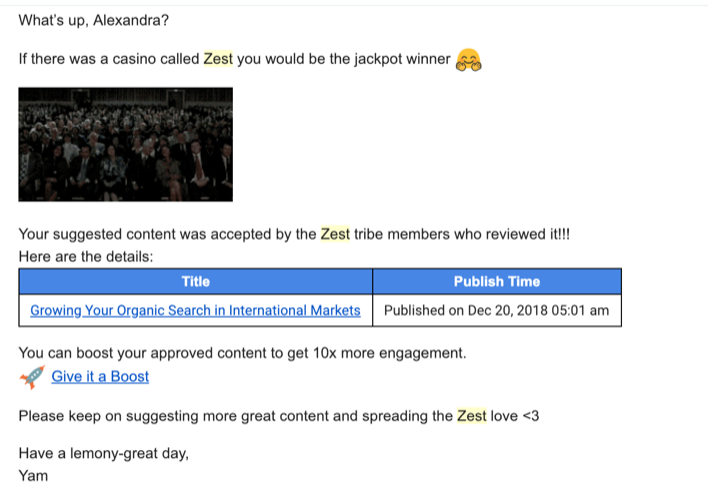

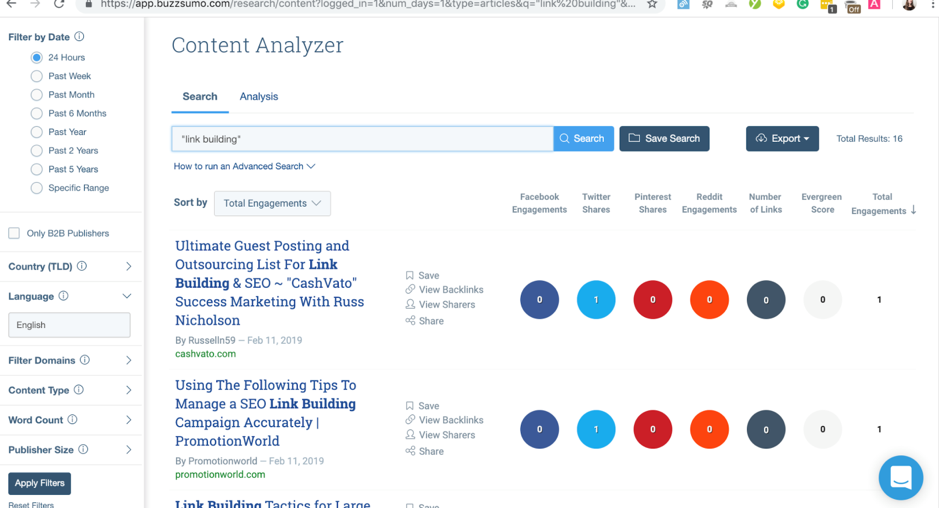






7 Responses
I know who send you the email asking the price hahaha. Nice blog post! I would also use tools that measure sentiment analysis like Brand24. Tools like this will notify you in real time what is happening for specifying keywords for example – “Fabric Printing” can you imagine how difficult business is this for outreach? You use negative filters and listen what kind of people talking and where…you can also check how influential they are so you can use it for for pitch and target other websites…and that’s my friend outreach 2019 Growth Hack 😀
Thanks so much for your comment and kind words! And speaking of link prospecting, there’re tons of ways of delivering it. Without a doubt, some niches require a very specific approach that can be done only with the help of Brand24. However, personally, I would prefer to deliver link prospecting by finding sites that have relevant content that went live within the last 48 hours. Those people are much more interested!
Great piece Alexandra! Having done outreach quite a lot, I understand that personalisation is key, nothing worse than reading an email that could have been sent to anyone. Some of the emails I have seen from previous colleagues makes me cringe! I have maintained my opinion that emojis used in the right context can be very effective but I have never tried GIFs. I know you stated that GIFs have been successful, I just wanted to know if the recipients responded with GIFs as well? I only ask this as it is something I have seldom seen in most email conversations. 😁
Thanks for your comment, Joe. Emojis can be very effective. Anything that triggers positive emotions works well. To be honest, I never send GIFs unless they are directly associated with me; I sometimes use GIFs of my horse and cat. This adds more humanity to my emails and lets the recipient know that I am a real person with a life outside of sending outreach emails. 🙂
I never receive GIFs in return, but people often ask questions about my horse.
Wish there was an option to ‘like’ this comment about the horse and the cat 😀 thinking of sending GIFs of my dog. Awesome post Alexandra, someone from our team shared it with all of us and I am glad they did, very inspirational, a breath of fresh air.
Jane, thanks for your kind words! I’ve noticed that the number of people who are going with standard templates and using hooks like “great post” is growing exponentially, I receive several of those old-school outreach emails on a daily basis. The only way to get things done and to cut through that noise is to deliver your own outreach style and approach. Otherwise, your performance won’t be as good as you’d hope.
I just feel your pain when you write about standard templates! A lot of people expect high rates after copy-pasting the template they found online. Templates are a great thing to start with but you really need to spend some time working on it. Here’s a good collection of templates to get some inspiration – https://reply.io/20-email-outreach-templates